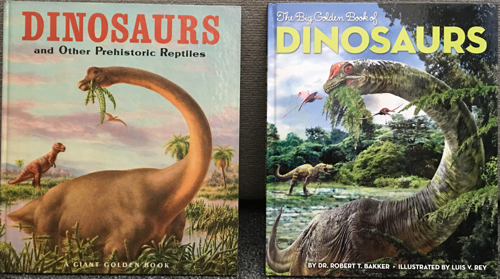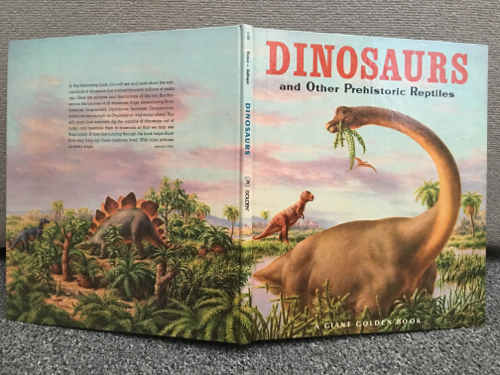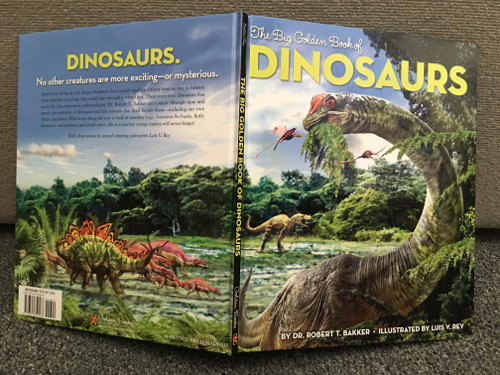Last week, on National Fossil Day, our Stephanie Keep organized a twitter conversation where folks could ask paleontologists their pressing questions. It rocked, and you can find the whole thing on the #askapaleo Storify.
Stephanie’s icebreaker question about the disappointingly featherless dinosaurs in Jurassic World got this reply from paleontology reporter Brian Switek:
A2: @keeps3 @TomHoltzPaleo But I would've loved to see #JurassicWorld depict the awesomeness of dinosaurs as we know them now #askapaleo
— Brian Switek (@Laelaps) October 14, 2015 I thought about that again when I saw this video today, in which paleoartist Josh Cotton fixes the Velociraptors from the first movie:
Jurassic World’s producers claim part of the reason they didn’t put feathers on their dinosaurs was to keep them scary, but seriously, I would not want that feathered beast chasing me. Nor does the excuse make sense that featherless dinosaurs are more familiar. We’ve known about dino feathers since the late ‘90s, and known they were quite common since at least the middle of the ‘00s. The young audience targeted by the latest film grew up with feathered dinosaurs, and the dinosaur superfans who adore the Jurassic Park franchise know that dinosaurs had feathers, too.
It’s uncanny how much more we know about dinosaurs now than we did 25 years ago, when Jurassic Park was filmed. And even then, it was remarkable how much we knew (or could reliably infer) about dinosaurs and their behavior. It was disappointing that the latest movie didn’t carry on the original’s commitment to incorporating the best modern science (and that the script didn’t measure up), but it was still quite a spectacle.
The progression you see in Josh Cotton’s video is pretty spectacular, too. It’s a testament to science that, where once the colors of dinosaurs were a matter of pure imagination, we now can recover remnants of pigment from fossilized feathers and know what color dinosaurs were. There are other changes that have happened in those years, refinements of our understanding of how dinosaurs stood and moved. 

 Compare the covers of my childhood copy of Golden Book’s Dinosaurs and Other Prehistoric Creatures (copyright 1960, my version was published in 1982, cover art by Rudolph Zallinger) to 2013’s The Big Golden Book of Dinosaurs (cover art by Luis Rey). Sure, the new dinosaurs have color and texture, but look also at how the Allosaurus holds its head low and its tail in the air. The Brachiosaurus is on land, not in the water. And on the back cover in 2013’s book, a vibrant Stegosaurus rears up on hind legs and a herd of hadrosaurids (Edmontosaurus, I believe) race across the field, in contrast to the staid stegosaur and Trachodon (a genus of disputed validity) in the 1960 version. [Thanks to eagle-eyed reader GrizzlyD for correcting my misidentification of an Allosaurus as T. rex and suggesting some alternative IDs for other dinos.]
Compare the covers of my childhood copy of Golden Book’s Dinosaurs and Other Prehistoric Creatures (copyright 1960, my version was published in 1982, cover art by Rudolph Zallinger) to 2013’s The Big Golden Book of Dinosaurs (cover art by Luis Rey). Sure, the new dinosaurs have color and texture, but look also at how the Allosaurus holds its head low and its tail in the air. The Brachiosaurus is on land, not in the water. And on the back cover in 2013’s book, a vibrant Stegosaurus rears up on hind legs and a herd of hadrosaurids (Edmontosaurus, I believe) race across the field, in contrast to the staid stegosaur and Trachodon (a genus of disputed validity) in the 1960 version. [Thanks to eagle-eyed reader GrizzlyD for correcting my misidentification of an Allosaurus as T. rex and suggesting some alternative IDs for other dinos.]
This constant revision is a feature of science that is both marvelous and sometimes troubling. That willingness to refine our claims in light of new evidence, and the ability to apply new tools to derive new insights from old bones, is a source of tremendous power. But creationists and other science deniers are fond of using such revisions as evidence that science is unreliable, shifty even. And they point to honest admissions of scientific ignorance (like older texts which proclaimed the color of dinosaurs to be unknowable) as proof that science is incompetent, without acknowledging the remarkable progress science has already made.

